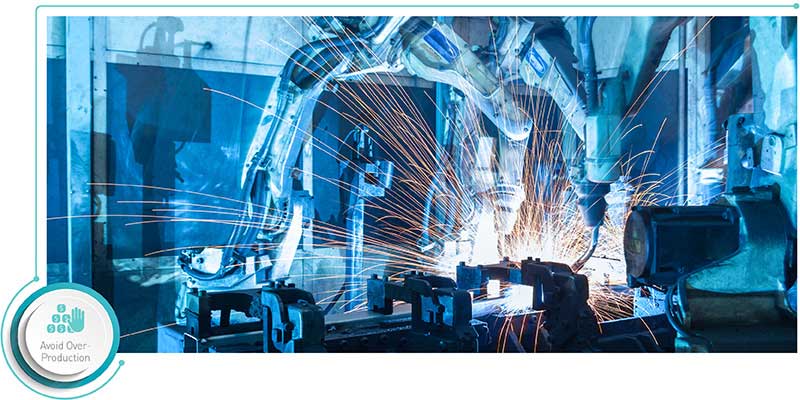Avoid Overproduction Starting with C-Parts

One of the worst wastes in lean manufacturing is overproduction. With careful C-parts management, you can nip that problem in the bud.
The Problem With Overproduction
It’s easy to see why overproduction is a problem: when you produce more goods than can be sold, you are causing unnecessary expenses that are disguised as assets with value. The company incurs the costs of holding the goods until they can be sold—if they’re ever sold. It also ties up capital in stock, raw materials, work in progress (WIP) and finished goods. Cashflow is damaged. Entire companies have even failed because of simple overproduction.
How Overproduction Occurs
While it’s easy to see how overproduction is a problem, it’s a bit harder to determine how this waste occurs. Why did overproduction occur in the first place? The answer: oftentimes, it all starts with C-parts.
According to logistics experts, there are 5 main causes of overproduction:
- Unreliable processes
- Too-big batch sizes
- Unstable schedules
- Unbalanced cells or departments
- Basing production on forecasting or inaccurate information
As you can see, non-value-enhancing activities in the preparation process are the biggest causes of waste. All of these causes can tie into C-parts management. Disorganization in the preparation process can cause over-ordering of C-parts, which leads to larger batch sizes and higher production than necessary.
How To Eliminate Overproduction With C-Parts Management
A well-organized and highly-efficient C-parts management structure will naturally reduce the risk of overproduction. With proper management, C-parts will only be reordered if there is an actual production demand. The exact amount will be determined for the period of time based on demand, and the needed order amount will arrive at the right time to the point-of-use.
Your company will be able to make exactly what the customer wants when they want it instead of over-producing. This sets you up for cost savings due to efficient preparation and production—in other words, you’ll be following the proven principles of lean manufacturing.
If your company is in need of additional knowledge and resources to pull off well-organized and highly-efficient C-parts management, then Bossard Inventory Management and Process Analysis services can help you get your manufacturing process where it needs to be. As a leading expert in proven productivity with an emphasis on C-parts management, Bossard is well-equipped to help your SME avoid overproduction and other costly mistakes throughout the manufacturing process.


